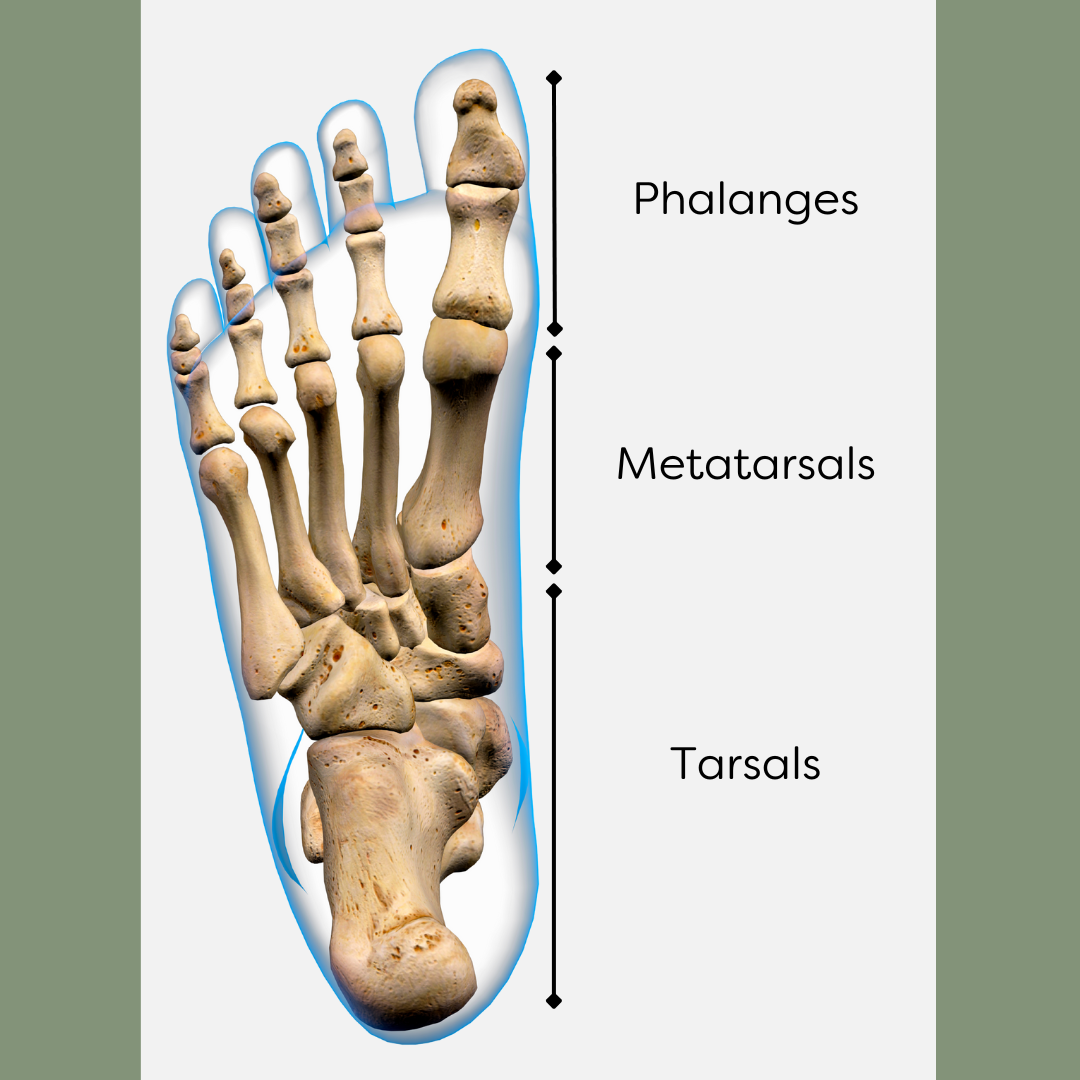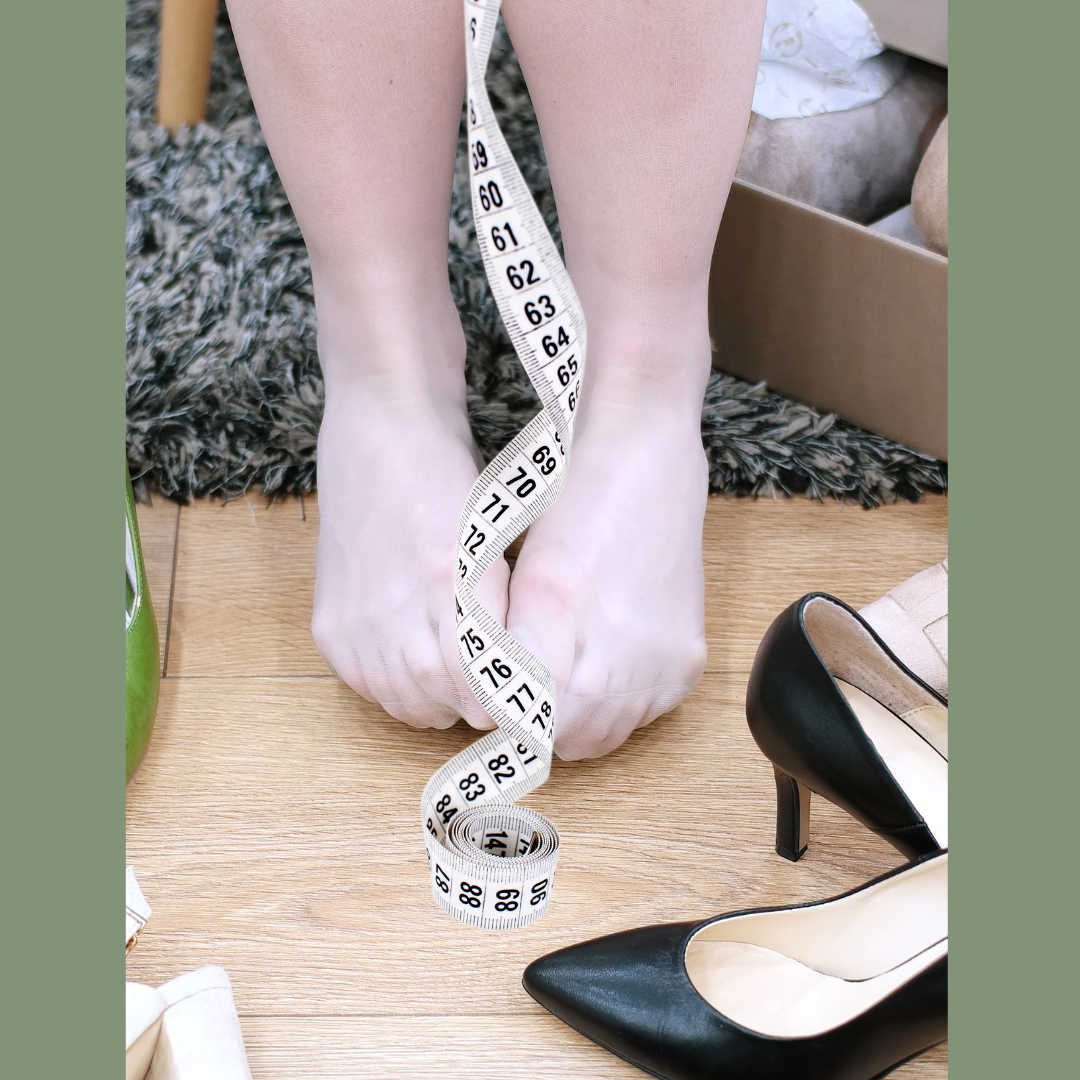Put Your Best Foot Forward
Okay, they might be at the bottom of our body, but our feet really are important! They provide support, stability and mobility, as well as allowing us to walk and run. They are also the body’s shock absorbers.
The 3 sections of the foot are known as the forefoot (Phalanges), midfoot (Metatarsals) and hindfoot (Tarsals)
The foot consists of twenty-six bones (phalanges, tarsals and metatarsals) and thirty-three joints, ligaments and muscles. Each foot has three arches and over one hundred tendons. There are important receptors on the soles of our feet, which help us to feel different pressures, temperatures and pain.
The three arches are located on the inside, outside and ball of the foot. Two longitudinal (medial and lateral) and one anterior traverse (see image below). They are formed by tarsal and metatarsal bones and supported by tendons and ligaments in the foot. It is the shape of the foot that allows weight bearing of the body and shock absorbing during movement. Flexibility in the foot allows us to move freely in the many ways we need to.
The 3 arches of the foot function like springs.
The big toe, also known as the Hallux, is made up of two phalanges and is connected to the metatarsal bone. It plays an important role in bearing weight and moving forward. As it bears a significant proportion of our body weight, the distribution helps to maintain balance and prevent strain on other parts of the foot and lower limbs.
Common foot problems
PLANTAR FASCIITIS: This is an inflammation of the band of tissue that runs from the heel to the toes. The fascia (which covers the muscle fibres) becomes inflamed and irritated, causing pain in the heel. Symptoms can also include pain in the midfoot.
The sole of the foot is known as the plantar surface. This is why we talk about ‘planting our feet’!
The pain can be worse after sleeping or resting and when you first start walking. A few home remedies that can give some relief include rest, ice packs, rolling a frozen water bottle under the foot and wearing comfortable shoes.
There are various treatments available to help with plantar fasciitis including chiropractic, which may involve:
Correction of the foot biomechanics by joint manipulation in the feet.
Soft tissue work, stretching and ice.
Dry needling the flexor digitorum muscle - which is in the central area of the foot - as trigger points here can mimic plantar fasciitis.
Orthotics (insoles) can be put into shoes to correct foot movement. Ensure appropriate footwear is worn, with wide enough shoes (not too small), to avoid squashing your feet.
SPRAINED ANKLE: There are different ways an ankle can get sprained. The most common is if you twist your foot too far inwards. This is called an inversion sprain. This can make the outer ligaments stretch past their normal range of movement and sometimes tear. Ligaments connect bone to bone and are bands of fibrous tissue that support your joints.
You can also sprain your ankle if you change direction quickly or jump and land awkwardly, for instance when playing sports such as football, hockey or basketball. But it can happen just as easily through everyday life, such as slipping off a kerb when walking.
Unfortunately, if you have sprained your ankle once, the chances of it happening again are higher and you will be more vulnerable as the ligaments have been overstretched and weakened, even after healing.
Signs and symptoms of an ankle sprain are pain and swelling around the ankle joint, sometimes with visible bruising, restricted movement and difficulty putting weight on that foot. The ankle may feel unstable when you stand on it.
For mild sprains, you should rest it straight away to protect it from further damage. You can wrap ice or frozen peas in a towel around the ankle to help prevent or reduce some of the swelling.
Use a bandage to compress the ankle and elevate it above the heart level using cushions, for instance.
If the sprain is bad, you should get medical attention straight away as you may have damaged the bones, tendons and/or ligaments. Having an X-ray will show any broken or fractured bones.
DIABETES RELATED FOOT PROBLEMS: Over time, raised blood sugar levels can damage the small blood vessels that supply the nerves to the feet. This can stop essential nutrients reaching the nerves. If these nerves get permanently damaged you can lose the feeling in your foot. This can be dangerous because if you injure yourself, you wouldn’t notice it. Also, if the blood vessels are damaged it can reduce the blood supply to the foot, meaning you have problems healing any cuts or sores. There is also a risk of developing skin ulcers.
Signs and symptoms of diabetes related foot problems are:
Tingling sensation, pins and needles, numbness
Burning pain
Dull ache
Loss of feeling in feet and/or legs
Calf cramps when walking or resting
To avoid developing these issues it is essential to control your blood sugar levels and follow a glycaemic-index diet, which means eating foods that keep these levels steady. Careful control of your weight is important. Keep as active as possible in your daily routine (according to your ability), ensuring you always wear appropriate footwear. Low level vibration therapy or massage to maintain good blood flow can be very helpful. If you do develop skin ulcers, laser therapy can help in the healing process. Always seek advice from your GP or diabetes clinician first.
Pregnancy care for your feet
During pregnancy, the body produces a hormone called relaxin. This helps tendons, ligaments, joints and muscles to relax, to accommodate the growing baby and in preparation for child birth. The combination of extra weight and changing hormone levels can cause the feet to widen, flatten and lengthen. Even after giving birth, the feet may never be the same as pre-pregnancy.
You may even find that your shoe size has changed!
As pregnancy progresses, gait (the way a person walks) will change to support the growing abdomen. The spine and pelvis may begin to curve inwards, causing a lean backwards. With this change in the centre of gravity, the weight will gradually shift towards the heel of the foot to compensate. This can be noticeable in the way some pregnant people ‘waddle’ when they walk!
To minimise issues with feet in pregnancy, wear wide-fitting, good quality footwear that has proper cushioning and support. Compression socks or stockings can help reduce swelling.
At Creative Chiro, we see many patients through their pregnancies with both massage (from 12 weeks) and chiropractic treatments (throughout). To read more about this, you can read our ‘Great Expectations - We Deliver’ article HERE
If you would like to make an appointment for treatment of any of the conditions mentioned in this article, you can call us on 01328854325 or email info@creativechiro.co.uk





